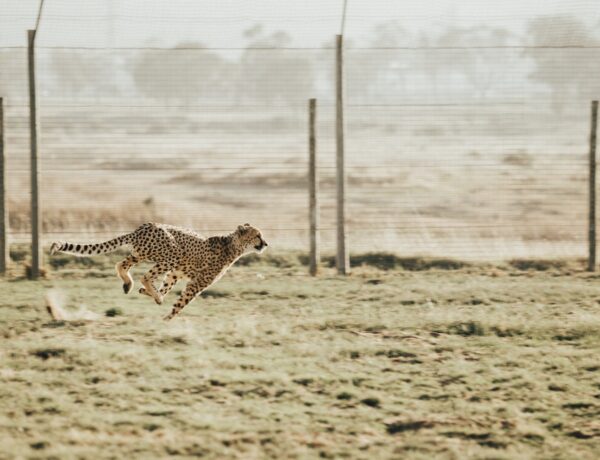Pacing in narrative writing is much like the rhythm in a piece of music. It’s the tempo at which a story unfolds, crucial in engaging the reader and controlling the flow of the narrative. Just as a musician varies the speed of a melody to evoke different emotions, a writer adjusts the pace of a story to influence the reader’s experience. This subtle art determines how quickly events unfold, how long scenes linger in the reader’s mind, and the overall tempo of the story.
Why is pacing so important? Think of it as the heartbeat of the narrative. When paced skillfully, a story can keep readers on the edge of their seats with rapid, action-packed sequences, or it can provide reflective, slower moments that allow for character development and plot depth.
A well-paced story ensures that the reader remains hooked, each chapter, paragraph, and sentence contributing to an overarching rhythm that makes the narrative compelling and memorable. It’s like guiding the reader through a dance – sometimes fast, sometimes slow, but always moving in a way that feels just right for the story being told.
Understanding Pacing and Its Impact
Pacing is essentially the speed at which a story’s events and details are revealed to the reader. It’s a critical tool in storytelling, used to control the narrative’s rhythm, much like a composer uses tempo in music. Pacing can vary greatly within a story – some parts might move quickly, filled with action and dialogue, while others might slow down, offering descriptive details or introspective thoughts.
The pace of a narrative significantly influences its tone and tension. In fast-paced scenes, readers often feel a sense of urgency or excitement, ideal for action or suspense genres. Quick pacing can heighten emotions and create a feeling of intensity. On the other hand, a slower pace allows for deeper exploration of characters and settings. It’s often used to build tension in a more psychological, simmering way, or to provide a respite from high-octane scenes, giving the reader a chance to reflect and connect more deeply with the story.
Each genre often has its pacing expectations. For example, thrillers and adventure stories typically have a faster pace, keeping readers engaged with constant movement and high stakes. Contrastingly, literary fiction or romance might embrace a slower pace, delving into characters’ inner worlds and relationships. Science fiction and fantasy can vary widely, sometimes racing through vast, complex worlds and ideas, or taking time to intricately build new realities for the reader to inhabit.
Understanding the relationship between pacing and genre is crucial for a writer. It’s about striking a balance that is true to the genre’s conventions while also serving the unique rhythm of the story being told. A well-paced story respects the reader’s expectations for the genre, yet isn’t afraid to play with tempo to enhance the narrative’s impact and emotional journey.
Techniques for Effective Pacing
To master the art of pacing, writers have an array of techniques at their disposal. These methods are like tools in a toolkit, each serving a specific purpose in shaping the narrative’s tempo.
Sentence structure plays a vital role in pacing. Short, crisp sentences can quicken the pace, creating a sense of urgency or excitement. They’re often used in action sequences or moments of high tension. In contrast, longer, more complex sentences tend to slow the pace down, allowing for more contemplative or descriptive moments. This variance in sentence length can keep the reader engaged and prevent the narrative from becoming monotonous.
Paragraph length and chapter breaks are also pivotal in controlling tempo. Short paragraphs and chapters can make a story feel fast-paced, propelling the reader forward. They often give a sense of immediacy and can be effective in keeping readers turning the pages. Conversely, longer paragraphs and chapters usually slow the pace, offering more detail and depth, which can be particularly effective in developing characters or setting.
Dialogue and action sequences are excellent tools for accelerating pace. Rapid-fire dialogue can convey a sense of urgency or conflict, pushing the story forward. Action sequences, with their inherent dynamism, naturally lend themselves to a faster pace. On the other hand, descriptive passages can slow the story down. These are moments where the writer can delve into the sensory details of the world they’re creating, allowing the reader to immerse themselves fully in the environment or the inner thoughts of a character.
The strategic placement of climaxes and twists is crucial in maintaining reader interest. A well-timed twist or climax can re-energize the story when the pace starts to lag. It’s like a sudden burst of energy that revitalizes the reader’s engagement. These elements, especially when unexpected, can significantly propel the story forward, setting the stage for new developments and keeping the readers invested in the narrative’s outcome.
Balancing Fast and Slow Pacing
Finding the right balance between fast and slow pacing is akin to a chef balancing flavors in a dish. Too much of one can overwhelm the other, but when done right, it creates a harmonious and engaging experience. In storytelling, this balance is crucial to maintain reader interest without causing fatigue.
Slow-paced scenes are the foundations of character development and world-building. They allow readers to delve into the nuances of characters, understanding their motivations, fears, and desires. This depth makes the characters more relatable and compelling, fostering a deeper connection with the reader. Similarly, slow pacing is beneficial in world-building, offering the reader a detailed view of the setting. This immersion in the story’s world adds a layer of authenticity and richness, making the narrative more believable and engaging.
However, too much slow pacing can make the story feel sluggish. That’s where the effectiveness of alternating pacing comes into play. Like a symphony with varying movements, a narrative with shifts in tempo keeps the reader engaged. Fast-paced scenes, filled with action or quick dialogue, inject energy and momentum into the story. They’re particularly effective after a slower, more introspective segment, as they reinvigorate the reader’s interest and push the plot forward.
This ebb and flow of pacing create a dynamic narrative. It allows for a range of experiences – from the thrill of a chase scene to the emotional depth of a reflective moment. The key is in the transitions. Smooth transitions between fast and slow-paced segments help maintain a natural flow, ensuring the reader isn’t jarred by sudden changes.
Final Thoughts
Mastering pacing is akin to a conductor expertly guiding an orchestra; it’s essential for creating a compelling narrative. A well-paced story can captivate readers, drawing them into the world of the characters and keeping them hooked until the very last page.
For writers, the journey to mastering pacing is one of experimentation and mindfulness. It’s about understanding the various tools at their disposal – from sentence structure to chapter breaks – and learning how to use them effectively. Writers should feel encouraged to experiment with different pacing techniques, to see how they affect the tone and flow of their stories. Like any skill, it takes practice and patience to find the right rhythm for each narrative.
Being mindful of pacing is crucial. It requires an awareness of how each scene, paragraph, and sentence contributes to the overall tempo of the story. This mindfulness helps ensure that the pacing aligns with the narrative’s goals, whether it’s to build tension, develop characters, or drive the plot forward.




No Comments